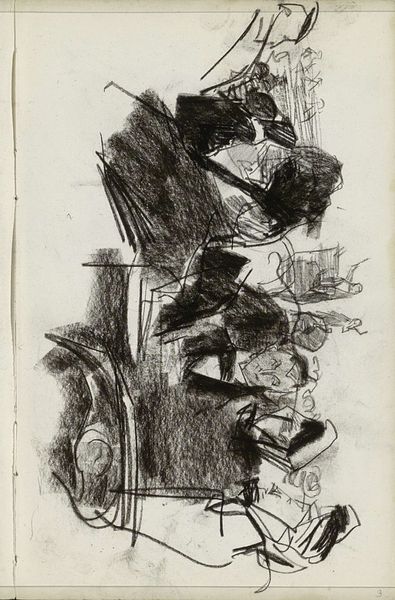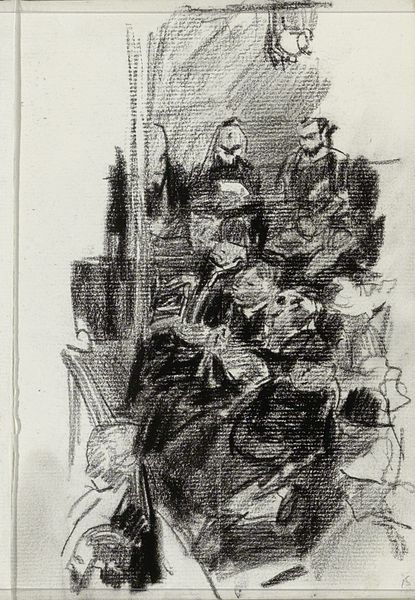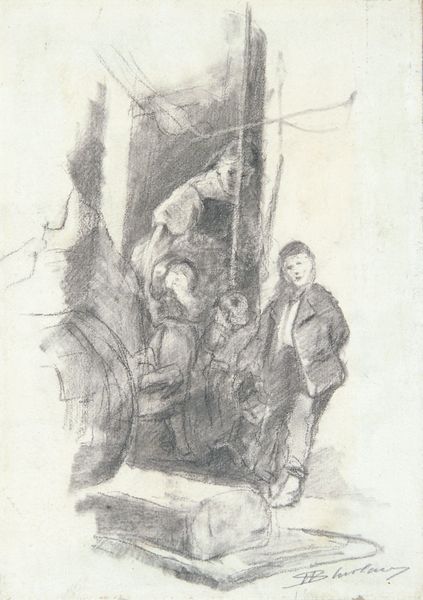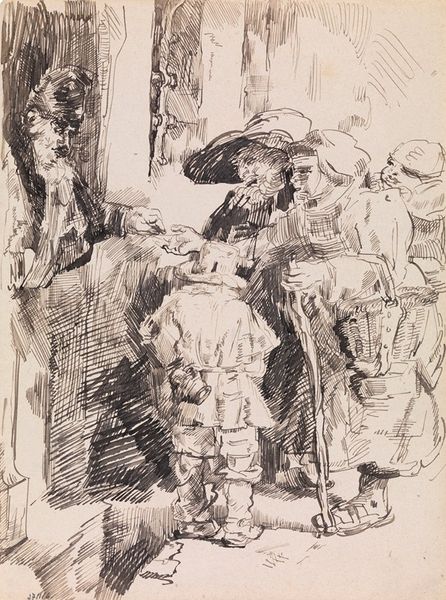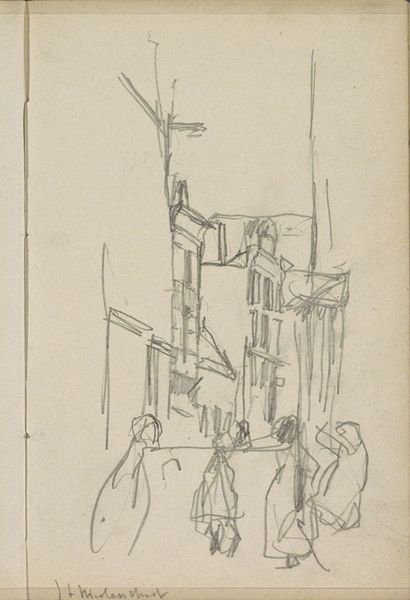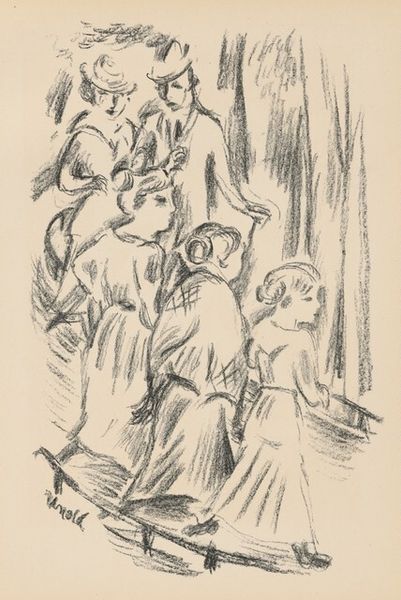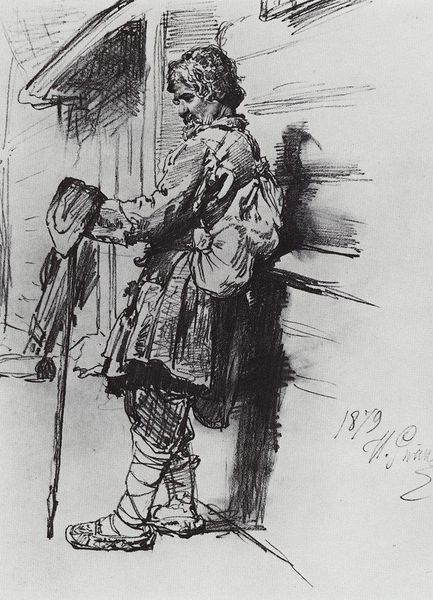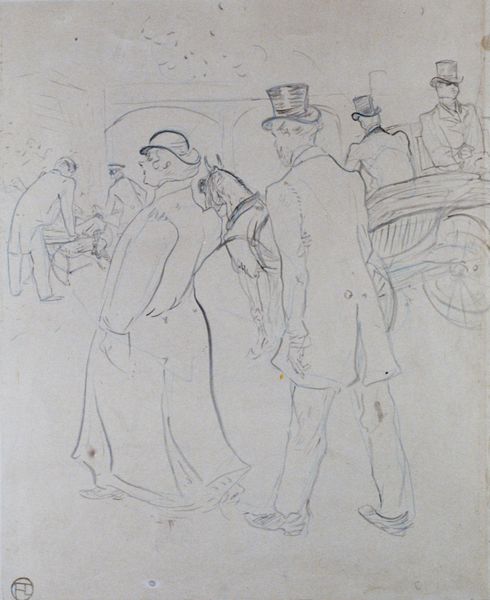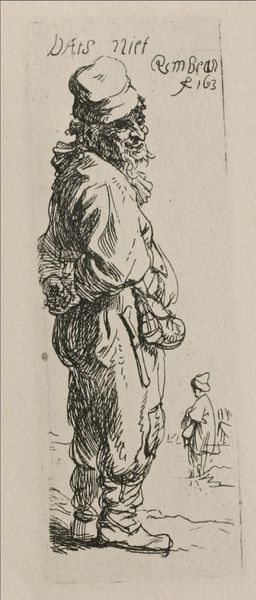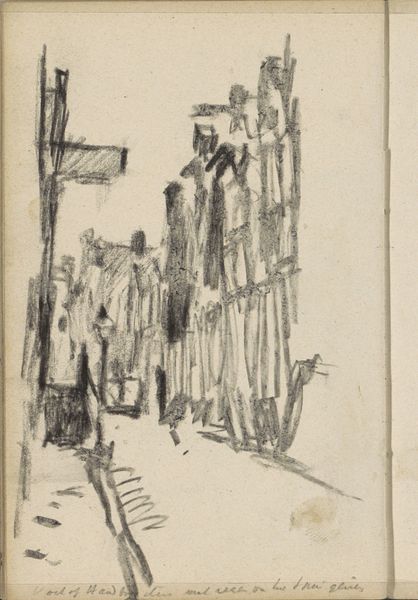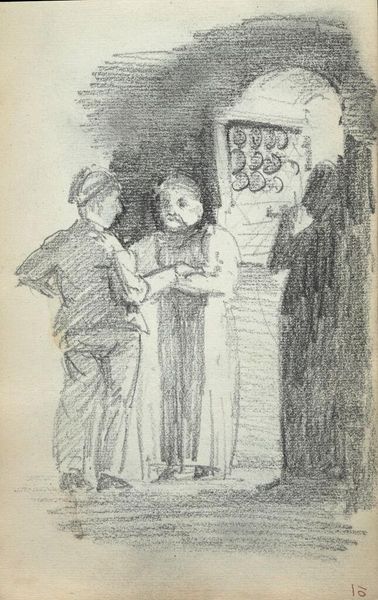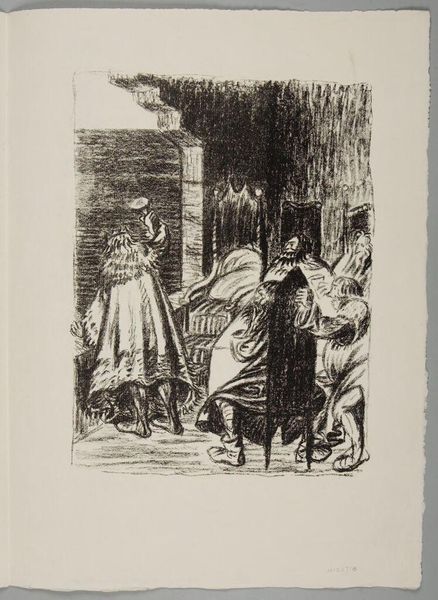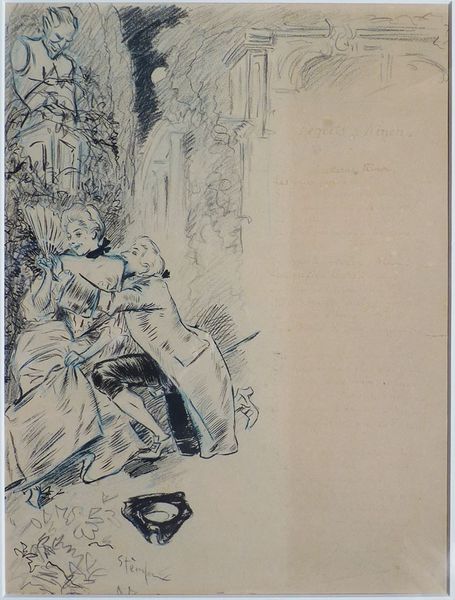
Copyright: Public domain
Curator: Here we have Henri de Toulouse-Lautrec's 1897 drawing, "The Chestnut," rendered in graphite. Editor: What a somber, almost ghostly scene. The muted greyscale lends a melancholic air to the figures; they seem to fade into the ground like echoes. Curator: Precisely. The lack of sharp lines contributes to that ethereal feel, almost as though it’s a half-remembered dream. Observe the use of line, a sort of frenetic hatching, almost scribbled, gives a sense of fleeting movement. We can note the spatial construction as the background figures in graphite suggest a blurred urban setting, a backdrop that heightens the subjects' isolation. Editor: Indeed. And considering Toulouse-Lautrec's penchant for capturing Parisian nightlife, I wonder about the economic realities hinted at here. The almost ephemeral nature of the drawing emphasizes a detachment, a sense of these people, and their potential for exploitation, drifting within their environment. This appears to be hasty sketchwork of workers or passersby that only scratches the surface. Curator: Good point. There is also his clever management of focus—sharper towards the foreground characters, with those details softening in the background, enhancing the compositional dynamism. His manipulation of contrast—dark tones delineating the shapes with such simple elegance that it all melds into something meaningful, evoking an emotion through form alone. Editor: Agreed. And though subtle, there are details. Look at how the slickness of the pavement reflects and distorts reality under that small dog; those are workers struggling through the drenching rain, seeking work and sustenance, an illustration of lived reality. Curator: It shows Toulouse-Lautrec's mastery in leveraging form and contrast to highlight the subjects’ inner realities. This technical brilliance resonates throughout his diverse oeuvre. Editor: Indeed. By emphasizing process, he directs our focus to the societal aspects often ignored within high art—a raw social narrative unfolding within a space fraught with instability. I love how he has done so much with so very little; the texture alone conveys such palpable experience. Curator: Ultimately, this brief reflection highlights the significance of considering the socio-economic as well as formal elements of "The Chestnut". Editor: It all underscores how examining material context deepens one's appreciation of art, revealing unseen layers of significance, like in "The Chestnut", where reality comes into sharp focus in those graphite tones.
Comments
No comments
Be the first to comment and join the conversation on the ultimate creative platform.
